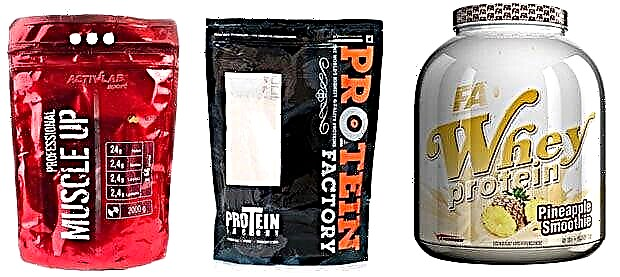If running for you is purely a hobby without any claims to the result, then I think this article is hardly useful to you. If you want to break personal records or there is a need to improve the result for passing the test in running, then you need to have good finishing acceleration. Today I want to tell you how to train him.

What determines the success of the finish acceleration
There are three main energy supply systems in the human body: phosphate, oxygen and lactate. Phosphate is responsible for a short-term load of no more than 5-6 seconds. This system is responsible for the height and length of the jumps, as well as for the starting acceleration at sprint distances. The task of the oxygen system is to provide the body with energy for a long period of constant stress. The oxygen system is extremely important at distances of 1500 meters and above.  And finally, lactate is responsible for the body's ability to work in a mode when the level of lactic acid in the body rises, and oxygen energy supply is completely or partially gone, and anaerobic lactate energy supply comes in its place. It is precisely the lactate system that is responsible for how well you will run distances from 100 meters to 1000... And also how well you can perform finishing accelerations at distances of 1000 meters or more.
And finally, lactate is responsible for the body's ability to work in a mode when the level of lactic acid in the body rises, and oxygen energy supply is completely or partially gone, and anaerobic lactate energy supply comes in its place. It is precisely the lactate system that is responsible for how well you will run distances from 100 meters to 1000... And also how well you can perform finishing accelerations at distances of 1000 meters or more.
How to Train Finish Acceleration (Lactate System)
Best of all, the lactate system is trained in short speed intervals, lasting from 30 seconds to 2 minutes, at which the level of lactic acid in the muscles reaches a high, close to maximum value. The workout is carried out as follows: After completing a full warm-up, you begin to perform the main work. For example, you set yourself the task of making 10 segments of 400 meters. The rest between each speed segment should not be too long so that the lactate level does not have time to drop. Also, do not forget that rest should be active, namely jogging will be the best option. A slow run will take from 30 seconds to 2-4 minutes depending on the athlete's fitness level and the length of the intervals.
More articles that may be useful to you: 1. How to cool down after training 2. What is interval running 3. Running technique 4. When to Conduct Running Workouts
Thus, you are running 400 meters at a speed at which your heart rate will be almost maximum. Then go to a slow run, rest for a predetermined time, and again immediately start running the next segment.  This interval training is considered one of the most difficult to do. As options for such training, you can run segments of 100, 200, 300, 400, 500, 600, 800 meters. The number of repetitions can vary depending on the distance you are training for, the speed at which the segments are completed, the weather conditions, and your current fitness level. For example, you can do 20-30 intervals for 100 meters, 10-15 for 200 meters. 600 5-7 intervals. 800 3-5. Remember to run at high intensity. If you can't handle the intensity, then instead of lactate, you will train the oxygen system.
This interval training is considered one of the most difficult to do. As options for such training, you can run segments of 100, 200, 300, 400, 500, 600, 800 meters. The number of repetitions can vary depending on the distance you are training for, the speed at which the segments are completed, the weather conditions, and your current fitness level. For example, you can do 20-30 intervals for 100 meters, 10-15 for 200 meters. 600 5-7 intervals. 800 3-5. Remember to run at high intensity. If you can't handle the intensity, then instead of lactate, you will train the oxygen system.

How to incorporate lactate training into your training program
If you are preparing to run at distances from 400 meters to a kilometer, then such training should be the main one for you. Accordingly, there should be at least one such workout per week with an average number of intervals and one with the maximum possible. And for the 400 meter run, almost every workout will be built around these intervals. If your task is to overcome the distance of 2-5 km, then with 5 workouts per week, one or two should be for training the lactate system. With more workouts, there should be more interval workouts at the anaerobic threshold. When preparing for running at distances of 10 km and more, such a workout can be included 1-2 times every two weeks, since the final acceleration and the lactate energy supply system itself are not so important for the stayer.









